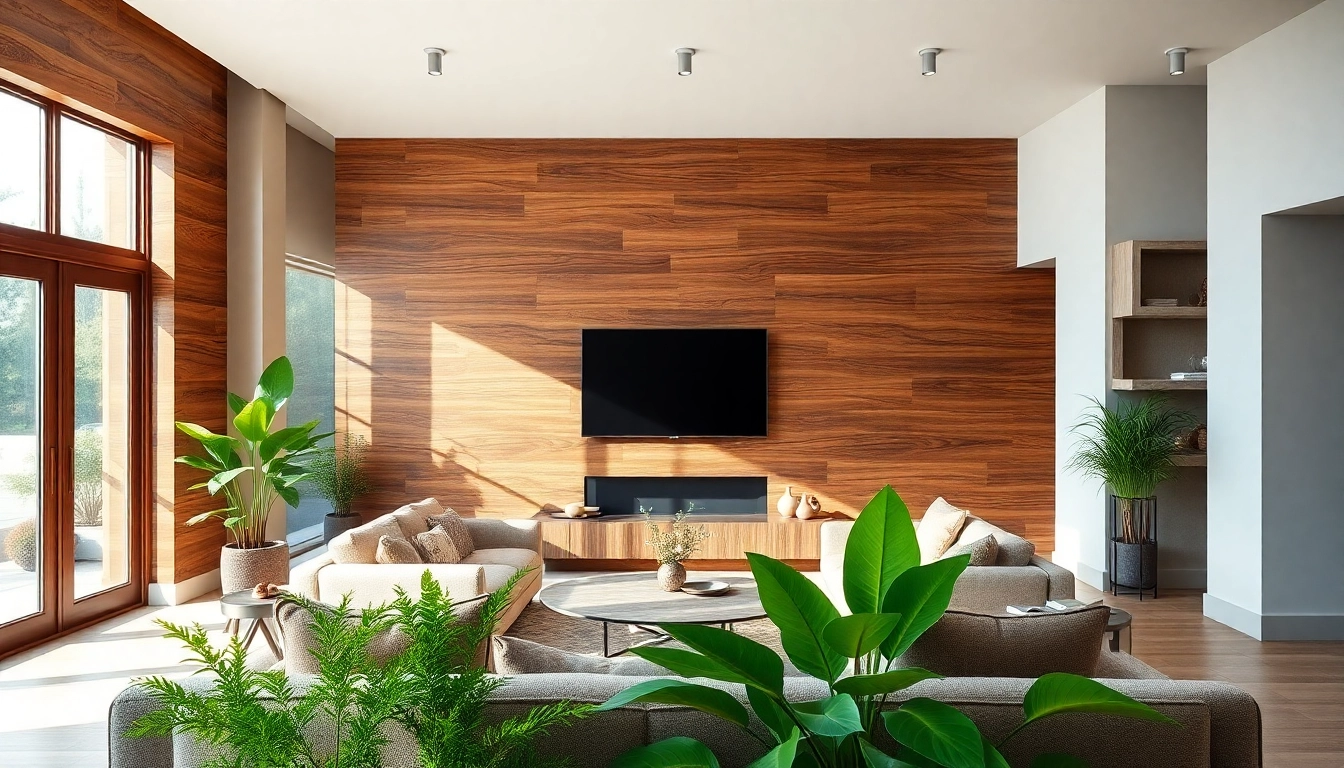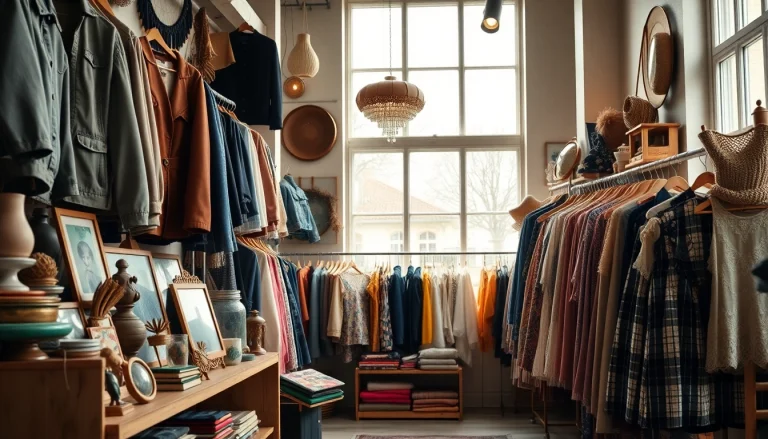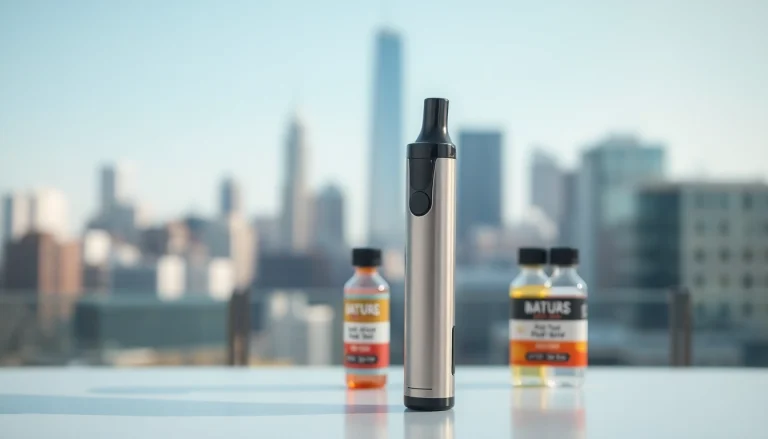Understanding Wall Cladding: A Comprehensive Guide
Wall cladding is an essential aspect of both interior and exterior design, serving as a protective and aesthetic covering for walls. This versatile solution not only enhances the overall appearance of a space but also provides insulation and weather resistance. Whether you are renovating an old structure or designing a new one, choosing the right wall cladding can make a significant difference. In this guide, we will explore everything you need to know about wall cladding, from its types and benefits to installation and maintenance tips. For those looking for inspiration, check out the wide range of wall cladding solutions available.
What is Wall Cladding?
Wall cladding refers to the application of one material over another to provide a skin or layer, which serves both aesthetic and functional purposes. It can be made from various materials, including wood, stone, metal, or vinyl, and is typically used to improve a structure’s appearance, protect it from the elements, and enhance its thermal performance. Wall cladding can transform a plain wall into a stunning focal point, allowing for creativity in design and style.
Types of Wall Cladding Materials
There are several types of wall cladding materials, each offering unique properties and aesthetics. Some of the most popular include:
- Wood Cladding: Wood offers a warm, natural aesthetic. It can be treated or untreated, and species like cedar or pine are common choices.
- Vinyl Cladding: Known for its affordability and low maintenance, vinyl cladding mimics the look of wood or stone without the associated upkeep.
- Stone Cladding: This type features natural or manufactured stone. It provides a rugged look and is often used in high-end designs.
- Metal Cladding: Aluminum or steel cladding is durable and often used in modern commercial buildings for sleek aesthetics.
- Composite Cladding: Made from a combination of materials, composites offer durability and environmental benefits, being often made from recycled materials.
Benefits of Using Wall Cladding
The reasons for choosing wall cladding are manifold. Key benefits include:
- Enhanced Aesthetics: Different materials and finishes can improve the visual appeal of any space.
- Weather Protection: Wall cladding acts as a barrier against moisture and extreme temperatures, protecting the underlying structure.
- Insulation: It can improve thermal insulation, reducing energy costs by regulating indoor temperatures.
- Durability: Many cladding materials are highly durable, requiring little maintenance over their lifespan.
- Increased Property Value: A well-clad structure can enhance property value, making it more appealing to buyers.
Choosing the Right Wall Cladding for Your Project
Factors to Consider When Selecting Wall Cladding
Selecting the most suitable wall cladding involves careful consideration of several factors:
- Climate: The local weather can influence material choice; for example, wood may not be ideal in very humid regions.
- Style: The architectural style of the building should guide the selection. For modern designs, metal or composite might be more appropriate, while traditional homes might suit wood or stone.
- Budget: Determine a budget early on, as different materials come with varying costs, installation fees, and maintenance requirements.
- Durability: Consider how well each material withstands wear and tear, sun exposure, and moisture.
Popular Wall Cladding Styles and Aesthetics
When it comes to aesthetics, there are endless possibilities with wall cladding. Some popular styles include:
- Rustic: Typically showcases natural wood finishes, creating a warm and welcoming feel.
- Modern: Characterized by sleek lines and minimalistic designs, often using materials like metal or concrete.
- Industrial: Utilizes raw materials such as reclaimed wood and metal, perfect for loft-style living environments.
- Traditional: Often includes elaborate stone patterns or wood paneling, reminiscent of classic architecture.
How to Match Wall Cladding with Your Interior Design
Integrating wall cladding into your interior design requires a strategic approach:
- Color Harmony: Ensure the color of the cladding complements other elements of your design, such as flooring and furnishings.
- Texture Balance: Combine different textures to create depth and visual interest within the space.
- Visual Flow: The choice of wall cladding should create a flow from one space to another, particularly in open-concept homes.
- Complementary Features: Pair cladding with elements like fireplaces or built-in shelving to enhance its appearance and utility.
Installation Process of Wall Cladding
Preparing Your Walls for Cladding
Before you begin installation, thorough preparation is crucial:
- Inspect Walls: Check for any damage, moisture issues, or mold that need to be addressed.
- Choose Installation Method: Depending on the material, determine if it requires direct attachment or a furring strip system.
- Gather Tools: Ensure you have all necessary tools, including a level, measuring tape, saw, and fasteners.
- Surface Cleaning: Clean the walls to remove dust and debris to ensure proper adhesion and fit.
Step-by-Step Installation Guide
Here’s a general step-by-step guide for installing wall cladding:
- Measure and Mark: Accurately measure the wall area and mark the studs to help with fastening.
- Cut Panels: Cut the cladding panels to the required size, allowing for expansion where necessary.
- Install the First Panel: Begin from one corner and fix the first panel securely to the wall using appropriate fasteners.
- Continue Installation: Install the remaining panels, ensuring to stagger seams for a more natural appearance.
- Finish Edges: Apply trim pieces or caulking at the edges for a polished and professional finish.
Common Mistakes to Avoid When Installing
To avoid installation pitfalls, consider the following common mistakes:
- Neglecting Moisture Barriers: Failing to install moisture barriers can lead to water damage over time.
- Incorrect Measurements: Double-check measurements to avoid cutting panels incorrectly and wasting materials.
- Inadequate Support: Ensure panels are securely fastened to studs or appropriate furring strips to prevent sagging.
- Ignoring Manufacturer Instructions: Always refer to the manufacturer’s specifications for installation to guarantee performance and longevity.
Maintenance Tips for Wall Cladding
Cleaning and Caring for Your Wall Cladding
Keeping your wall cladding in good condition requires regular cleaning and care:
- Dust and Dirt Removal: Regularly dust and wipe down surfaces to prevent dirt buildup.
- Power Washing: For exterior cladding, occasional power washing can effectively remove grime and mold.
- Use Gentle Cleaners: When cleaning, opt for mild detergents to prevent damaging the finish.
Repairing Damaged Wall Cladding
Damage can happen, but most cladding materials are repairable:
- Wood Cladding: For scratches or dents, sand down the area and re-stain or paint as necessary.
- Vinyl Cladding: Cracks can be filled using vinyl repair kits commonly available in home improvement stores.
- Stone Cladding: For chipped stone, a professional may be needed to replace sections or reattach pieces.
How to Preserve Your Wall Cladding’s Appearance
Preservation is key to maintaining the visual aesthetics of wall cladding:
- Routine Inspections: Regularly check for signs of wear or damage to address issues early.
- Protective Coatings: Consider applying protective sealants to wood or stone cladding to enhance durability.
- Trim Vegetation: For exterior cladding, keep vegetation trimmed back to minimize moisture and pest issues.
Innovative Trends in Wall Cladding
Eco-Friendly Wall Cladding Solutions
With environmental consciousness on the rise, many are opting for eco-friendly cladding solutions. Sustainable materials such as reclaimed wood, bamboo, and recycled composites are gaining popularity, providing style without compromising the environment. These materials not only reduce waste but also offer unique looks that can’t be replicated with traditional products.
Smart Technology Integration in Wall Cladding
Today’s modern homes are increasingly integrating smart technology into their design. Wall cladding is no exception; innovative solutions like embedded sensors for temperature regulation and LED lighting are becoming popular. These technologies enhance functionality while adding an aesthetic touch to living spaces.
Future of Wall Cladding Design
The future of wall cladding design will likely embrace even more innovative approaches. Expect to see increased use of sustainable materials, smart technology enhancements, and a focus on customizable options that cater to individual tastes and preferences. The integration of augmented reality may also allow homeowners to visualize their wall cladding choices in real-time before installation.








